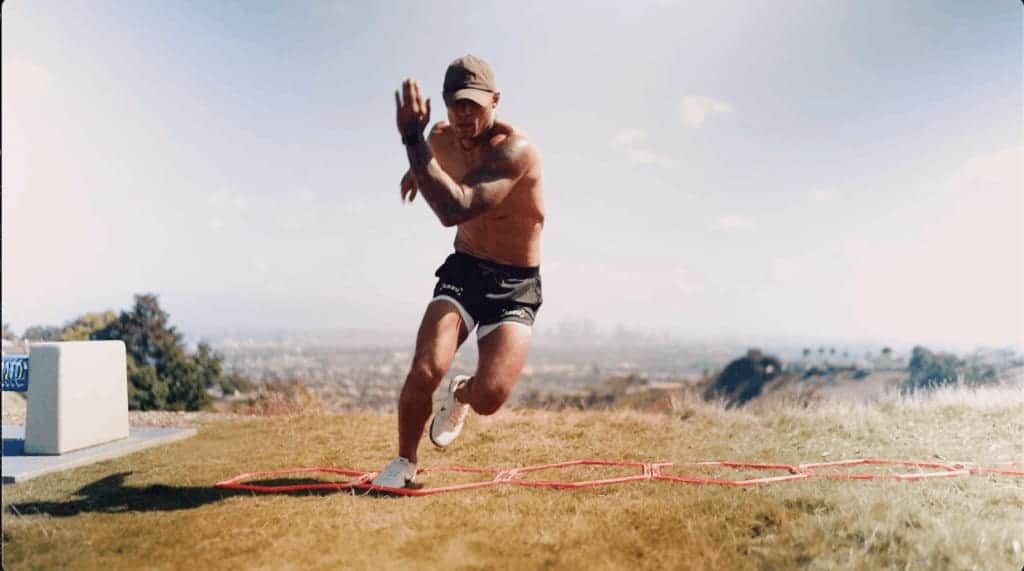Whether it’s lasted for weeks or years, it’s safe to say most of us have experienced a plateau or stalled progress when it comes to fat loss at least once in our lives.
Back in the day, it was thought that the most effective way to blast excess fat was to launch into daily long cardio sessions that would burn quite a bit of calories. Now, don’t get me wrong: this method can work to shed some fat, provided you have the time and energy to spend pumping out hours of extra cardio per week. Even so, what I see most often with clients trying to lose weight is that they’ve been sticking with steady-state cardio (say, jogging for 30 minutes to an hour) daily in order to reach a low body fat percentage … and, subsequently, have hit a plateau long before they reached their goal.
Why does this happen, especially when you know you’re burning calories?
The short answer: adaptation. Below I’ll explain more and get into why my method of rapid-fire training works so well to break through plateaus and primes your body for leanness.
Why “Normal” Cardio Doesn’t Cut It

Hours on the treadmill may feel like work, but chances are, unless you’re alternating sprints with some of that jogging or walking, you’re not going to break through a plateau. The reason for this lies mostly in the ability of your body to adapt to your workouts and energy (aka: calorie) output.
An easy way to look at it it this: the more you jog, the easier jogging becomes. Day by day you can jog for a little longer, simply because your muscles and bones grow stronger from the exertion, your lungs strengthen and expand to increase your oxygen intake, and your heart strengthens to pump blood and nutrients more efficiently.
Along with this, your body also adapts to the amount of energy you’re burning, becoming more efficient each time you work out. As you lose fat, you burn less calories and your body starts to easily handle that mile-long jog that used to be so tiring. Once this happens, you’ve reached a point of equilibrium, with your body no longer exerting itself enough to cause further physical changes.
Aka: fat loss is stalled.
Why Rapid-Fire Training Works Best

Typically, the urge when we reach a plateau is to simply tack on more time in order to increase the amount of calories we’re burning. Theoretically, this can work, but can also ultimately be an unsustainable way of furthering weight loss. There is a high risk of burnout, and the most likely outcome is that you’ll quickly continue to reach another plateau.
A much more efficient way of training that results in faster fat loss is the type I use and refer to as “rapid-fire” training, a form of HIIT (high-intensity interval training).
The basic benefit of using HIIT for fat burn is that it prevents your body from reaching the point of complete adaptation to your workout. HIIT alternates periods of extremely high-intensity “work” intervals, with lower-intensity “rest” intervals. Think 30 seconds of all-out sprinting, followed by 60 seconds of power walking, repeated for 15-20 minutes.
Studies show that this style of exercise actually alters your body at a cellular level to become more efficient at burning fat (including improving your insulin levels and response), and has also been proven to burn at least twice the amount of fat as “standard” cardio workouts. Even if HIIT doesn’t burn as many calories during a session as a longer cardio session, research shows that those who perform HIIT workouts actually burn more calories up to 24-48 hours after their workout due to a phenomenon called the afterburn effect. [*]
The afterburn effect occurs due to your body’s attempt to recover from the high-intensity intervals of your workout, which deplete your body of oxygen and also have an anaerobic effect. It takes a great deal of calories to re-oxygenate your body, and also repair muscles. This results in greater calorie burn over time, versus only the initial you receive when you do a longer, slower cardio session.
Another major benefit of rapid-fire training is that it significantly improves your agility through full-body movements (which translates to more stable real-life movements that require lifting and twisting), while also improving your explosive strength, which comes in handy in all types of sports. This is because typical HIIT movements involve jumping, throwing, or performing movements like burpees that require quick, whole body coordination.
Not to be overlooked is also the epic fact that HIIT workouts can accomplish in 15-20 minutes what might take 1-2 hours of standard cardio. Studies show that even if you burn the same amount of calories in a long, steady cardio session as in a shorter HIIT workout, you will still burn more fat during the HIIT workout than in the steady-state cardio workout. [*]
Sample Rapid-Fire Workout
The great thing about HIIT workouts is that they can easily be structured. You can use one exercise (say, burpees), and do 60 seconds on, 60 seconds off for 15 minutes, or compile several moves into a full HIIT.
Below is a sample HIIT, rapid-fire workout that will keep your mind stimulated, while introducing your body to new moves and a higher intensity to get fat melting again. You can also subscribe to my Youtube Channel and follow on Instagram for weekly sample workouts.
If you want to take your training to the next level and receive step-by-step guidance and instructions, alongside ultra-HD follow-along videos and a complete workout guide, check out my Ultimate Fitness Bodyweight Platform (p.s.: click here for a FREE 14-day trial).
Hey Michael,
The more I read or hear on the Interwebs, the more confused I get. Thats due to the fact that recently I heard one dude that claims the exact opposite. And he’s shredded and strong also… Hm. He says that long cardio works on fat and fast and intense movement relays on carbohydrates.
My own conclusion to the thing with fat loss is that it depends to 75% on my dietary choices. I was used to intermittent fasting and I care a lot about which nutrients I eat at which time.
What’s your take on that and why should I train with your method?
Best regards and salute from Germany, Norman
Norman,
I’m sure he’s probably lifting hard in the gym as well if he’s not doing any king of explosive/HIIT workouts, low to medium intensity cardio alone isn’t going to get you super shredded and strong. This article talks mainly to the point of breaking through plateaus in your training if that’s what people are experiencing!
Also, you’re absolutely correct, if you’re not eating right and putting the right things into your body, how can you expect it to perform at it’s top potential!? It sounds like you should stop letting the internet confuse you and do some of your own research! Give it a try and see if it works for you! I’d be interested to see the results!
Rapid-Fire Training Works Best indeed! Thanks for the useful advice.
excellent information bro!
Thanks Santiago, glad to hear you found it informative and hope you can utilize it in your training!?
I am really happy to say it’s an interesting post to read . I learn new information from your article , you are doing a great job . Keep it up
Ok so I’m just curious. What is the best way to start losing weight for a person who is wanting to lose 100+ lbs. I starting going to the gym about the end of Feb. Started on the treadmil worked my way to doing the eliptical and bicycle for 30 mins. I’ve been switching the them up each day Mon-Friday. Then I added a little weight lifting. So far I’ve lost 36 lbs. My starting weight was 299 lbs. I’m afraid to hit a platue. What can I do to avoid it?
Hi Christine! 36 lbs is very impressive! You’re already over a third of the way there! The key is to stay consistent with your workouts, lock your diet in, and drink a lot of water (like 3/4 of a gallon to a gallon) this help curve your appetite too! If you do this and push yourself everyday you’ll reach your goal weight! If you start to feel like you’ve hit a plateau then turn up the workout intensity a notch. Add some sets, reps, and/or weight to your weight training and add time and incline/resistance to your treadmill/bicycle cardio sessions! And as always keep your intensity level high, the higher you’re getting that heart rate the more calories you’re burning!
Stay with it and stay positive, I believe in you! Let’s get it in!?